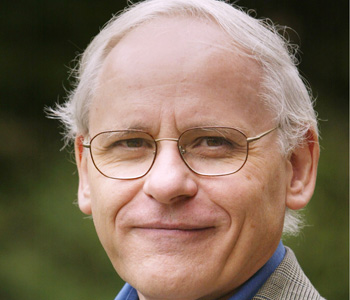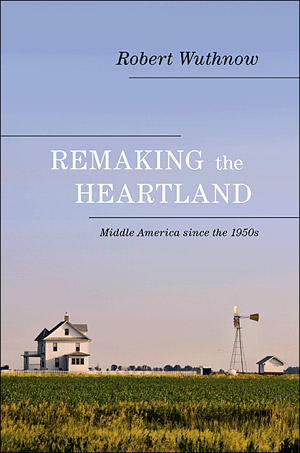
Remaking the Heartland examines the profound social transformation that has taken place in the middle of the United States during the past half century. This is a region known for its small towns and farms. For years, it was described as a good place to be from. Writers frequently characterized it as the home of rustics who lagged behind the times and raised ignorant offspring who did the same.
But over the past half century the heartland has remade itself.
A dramatic reduction in the farm population has led to an equally dramatic increase in agricultural productivity through the application of new technology. Small towns have remained small and many are even smaller than they were a few decades ago. But few have actually died and all but the smallest have proven amazingly resilient. Public education has remained strong. Communities are adapting to immigration and new ethnic diversity.
Readers who have never lived in the heartland may be surprised by what has been happening there.
The region’s population has never been as settled as images of quaint farms and villages may have suggested. And contrary to ideas about “country bumpkins,” the region has been remarkably effective at providing high-quality low-cost public education for its citizens—from elementary school through college.
To understand these realities, it is necessary to situate the heartland in a larger historical context.
“Small towns have remained small and many are even smaller than they were a few decades ago. But few have actually died and all but the smallest have proven amazingly resilient.”
At the end of the American Civil War, tens of thousands of pioneer families took Horace Greeley’s advice to “go West.” Streaming across the Mississippi, they settled in Iowa and Missouri, went south into Arkansas, north to Minnesota, west into Kansas and Nebraska and the Dakotas, and eventually into Oklahoma.
For decades, these Middle West states constituted America’s heartland. It was here that entrepreneurs planted corn and wheat, raised families, built schools and churches, and organized small towns.
But in recent decades, the action has arguably shifted away from the heartland. New York Times columnist Timothy Egan expressed the prevailing view a few years ago in his award-winning book, The Worst Hard Time. From his visit to the Middle West, Egan concluded that towns were collapsing, entire counties were populated by the old and dying, and the only growth industries were pigs and prisons. Others suggested that the region might as well again become a vast “buffalo commons.”
U.S. Census figures demonstrated the region’s decline. Between 1980 and 2000, 62 percent of the Middle West’s 5,500 towns lost population. In North Dakota, 83 percent did. And that trend has continued. Figures from the 2010 Census show that 58 percent of the Middle West’s towns have fewer people than they did a decade ago.
But it was having been raised in the Middle West that eventually drew me to write Remaking the Heartland.
In previous books, I examined social change in a wide variety of other contexts—from Western Europe during industrialization in the nineteenth century to American cities experiencing immigration in the twentieth century. For this research, I visited dozens of towns, did scores of personal interviews, and analyzed reams of statistics. And I wrote the book with the general reader in mind.
The story begins in Lebanon, Kansas, a town near the exact center of the 48 U.S. contiguous states. Lebanon has fewer than 300 residents—and a fascinating history that includes Indian battles, Populists, Prohibitionists, outlaws, preachers, song writers, journalists, and even a visit by Horace Greeley.
I describe how folks are faring a few miles away in Smith Center, the county seat that has one of the most successful football teams in the country.
From there, I invite readers to tour with me through parts of Nebraska where Buffalo Bill once organized his Wild West extravaganzas, through places in South Dakota and Missouri where Laura Ingalls Wilder lived, and to a town in Iowa where Mary Ingalls went to school.
Returning to Kansas, I examine the huge meat processing industry’s impact on Garden City, describe a community in Oklahoma that is hoping to build a commercial space port, and then turn to the spectacular growth that is taking place around some of the region’s largest cities.
The people who live in these communities, small and large, give a voice to the changes in farming, immigration, the oil and gas industry, military bases, colleges and universities, and new high-tech industries that are reshaping the region.
The statistical information casts doubt on many of the ideas propounded in standard sociological theory.
Urbanization, for instance, was far more complicated than simply a linear shift from farms to cities. There was extraordinary migration in both directions. In the 1950s, when the farm population declined at its steepest, the decline was by no means driven only by the lure of lucrative off-farm jobs.
Or take this other example. Higher education is certainly an important asset in training young people to be good citizens and in giving them the skills to advance in their careers, but it is also a major factor in uprooting them from their communities.
At the same time, the evidence confirms arguments from other studies. It shows the importance of social networks in explaining immigration, and demonstrates why community involvement is often greater in small towns than in cities. It shows that early settlers were right when they fought about the location of county seats and railroads or devoted themselves to founding colleges. The long-term effects of those decisions are still evident. So are the effects of decisions about the location of military bases, air fields, and interstate highways.
One of the best examples of how the heartland is changing can be found near Kansas City, in Johnson County, where builders are putting together new housing developments and constructing highways at a frenetic pace.
Since 1970, Lenexa has grown from about 5,000 to almost 50,000, Leawood has climbed from 10,000 to 32,000, and Olathe has soared from 18,000 to more than 125,000. By 2040, Olathe’s population is expected to top 300,000.
This is hardly what one would expect in a state with fewer than 3 million people, where 70 percent of the towns were smaller in 2005 than they were in 1980.
But Johnson County is the home of high-tech companies like Sprint and Garmin and scores of pharmaceutical and bioscience firms; it headquarters dozens of major retail, warehousing, and distribution companies. Johnson County is a magnet not only for well-educated young people with small town roots, but also for migrants from other regions. Nearly half of its population was born in another state.
Growth like this is happening throughout the heartland—in Minneapolis and St. Paul, along Interstate 70 west of St. Louis, near Omaha and Tulsa, around Des Moines, and in northwest Arkansas.
Entrepreneurs like Sam Walton, John Tyson, Warren Buffett, and David and Charles Koch are part of the story. And yet, there is another story that involves visionaries a century ago—those who experimented with engines and aviation, who planned street car lines, and who benefited from even earlier efforts to start schools and found colleges. It was those early institutions that provided the groundwork for the more recent transformations.
“Over the past century and a half government has played an enormously important role in the heartland. Before the pioneers arrived, the government surveyors, land agents, and cavalry prepared the way.”
I came away with an optimistic appraisal of what is happening in this part of America’s heartland.
To be sure, population is not growing like it is on either coast. Jobs are often scarce and rising fuel prices make long commutes difficult. Children grow up and seldom return.
Yet, the region’s contribution to the national economy remains undiminished. Effective adaption is happening everywhere one looks—from GPS-guided tractors, to wind energy farms, to bioscience laboratories. The heart of the heartland is beating strong.
Much of the reason lies in the enduring social institutions the region’s residents built from the 1870s to the 1950s. These included an effective system of county and township government, and especially of primary and secondary schools.
By the 1920s, the Middle West had become known as the “education belt.” Over the next half century, it added a large network of colleges and universities, pioneered the nation’s aviation industry, adapted to international markets, and rebuilt its infrastructure. Not surprisingly, the people I talked to expressed pride in their communities and voiced cautious optimism about their place in America’s future.
Is there a policy message in all this? Perhaps.
Pundits describe the heartland as a hotbed of anti-government fiscal conservatism. And that may be true.
But over the past century and a half government has played an enormously important role in the heartland. Before the pioneers arrived, the government surveyors, land agents, and cavalry prepared the way. County and township governments formed, regulated and taxed the use of land, and supervised the orderly development of primary and secondary schools. World War Two filled the region with ammunition depots and military bases that gave fledgling companies their start and created lasting infrastructure for new businesses.
The heartland is currently involved in the nation’s struggle to rebuild its infrastructure and avoid further economic catastrophe while paying heed to the demands of social conservatives and Tea Party activists.
It may be tempting to think of the heartland as a kind of hinterland, still populated with indigent hayseeds too poor to take advantage of progress in the nation’s great cities. But to think that would be a big mistake.


Robert Wuthnow is Andlinger Professor of Social Sciences and chair of the Sociology Department at Princeton University. He is the author of more than two dozen books. The book he is currently writing, Red State Religion, traces the history of religion and politics in Kansas from Abraham Lincoln’s visit in 1859 to the murder of Dr. George Tiller in 2009. Wuthnow’s grandfather lived in Olathe, Kansas, when the town’s inhabitants numbered fewer than 3,000.